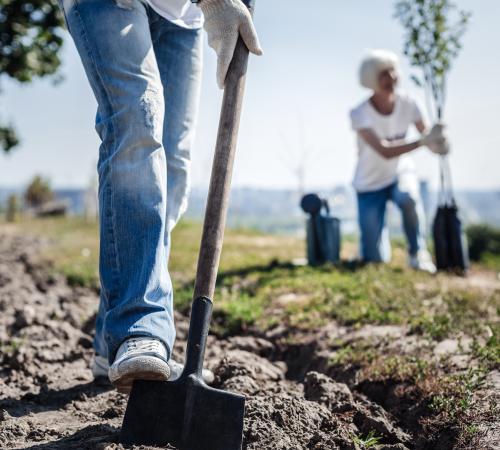
Landlord's guide to new tenant preparation checklists

Curious about what steps to take before your new tenants arrive? This checklist can help you get everything in order and ready to hand over the keys.
Inspection before move-in date
Before welcoming new tenants, it's crucial to thoroughly inspect the property.
According to section 11 of the Landlord and Tenant Act 1985 (external link)1 , landlords are legally required to repair essential installations, such as plumbing, electrical systems and boilers. During your inspection, ensure these systems are in proper working order.
According to the Homes (Fitness for Human Habitation) Act 2018 (external link) 2, landlords must make sure their property is fit for human habitation, so having an inspection can help identify any risks.
Additionally, it's mandatory to obtain an annual gas safety certificate3 , maintain fully operational carbon monoxide detectors, and have all electrical appliances PAT tested.
Disclaimer:
Managing rental properties is a complex business. At Hiscox, we want to see your investments thrive. Our articles offer insights into property management and landlord best practices. But these articles aren't professional advice. To find out more about a subject we cover here, please seek professional advice.
Repairs and upgrades
It’s the landlord’s responsibility to ensure your property is in excellent condition, as per the Homes (Fitness for Human Habitation) Act 2018 (external link). Before a tenant moves in, it's essential to complete any necessary repairs.
Here are some common repairs and upgrades to consider to enhance your property's appeal:
- Repaint the walls: A fresh coat of paint can improve the look of your property. The best time to do this is between tenancies, showing new tenants that you care about their living environment.
- Replace or clean carpets: If the existing carpet is worn, stained, or damaged, consider replacing it. If it's still in good condition, ensure it is thoroughly cleaned.
- Check doors and windows: Make sure all doors and windows are fully functional, and that exterior windows and doors have working locks. This can help prevent security issues and break-ins.
- Eliminate mould and damp: Ensure the property is free from mould and damp. If you find any, address these issues before the new tenant moves in, as it’s a legal requirement to ensure the property is free from anything that can cause serious harm per the Homes (Fitness for Human Habitation) Act 2018.
Taking these steps can not only make your property more appealing but also demonstrate your commitment to providing a comfortable and safe living space for your tenants.
Cleaning
Ensuring your property is thoroughly cleaned before new tenants move in is crucial, as it’s a legal requirement outlined in the Homes (Fitness for Human Habitation) Act 2018 (external link). You can either handle the cleaning yourself or hire a professional service to perform a deep clean and ensure everything is in top condition. Opting for professionals can save you time and effort. They have the expertise and equipment to make your property look its best, which can enhance tenant satisfaction. Additionally, it can set a precedent and show tenants how you expect to find the property when they move out.
It's also wise to arrive at the property early on move-in day to conduct last-minute checks. Look for any areas that might need a quick spruce up before your new tenant arrives, such as:
- Sinks
- Toilets
- Hobs
- Ovens
- Worktops
- Carpets
- Windows.
Natural wear and tear, like marks on the wall, are acceptable – but should be documented in the inventory.
Move-in inspection
When your tenant is moving in, conduct an inspection with them. This lets you document the property's condition, serving as a reference point and protecting you if any issues arise during the tenancy.
Ensure there is no mould or damp, verify that fire exits are suitable, check that all toilets are functioning, and confirm the property is appropriate for the number of tenants. It can help to have a landlord inspection checklist so you can keep the property in good condition.
After this initial inspection, you can perform regular inspections to ensure the property is well-maintained. You should also tell your tenant how they can address any issues which may arise during their tenancy. This could be providing them an email address where they can raise issues, a phone number in case of emergencies or an online portal where they can report any problems which arise.
Welcome package
Creating a welcome package for your new tenants can help them settle in. This package could include useful items to make their move smoother, such as your contact information for easy communication, local area guides to help them get acquainted with their surroundings, and simple instructions for using the appliances in their new home.
References
- https://england.shelter.org.uk/professional_resources/legal/housing_conditions/responsibility_for_repairs/repairs_under_section_11
- https://www.gov.uk/government/publications/homes-fitness-for-human-habitation-act-2018/guide-for-tenants-homes-fitness-for-human-habitation-act-2018
- https://www.gassaferegister.co.uk/gas-safety/renting-a-property/landlord-gas-responsibilities/






